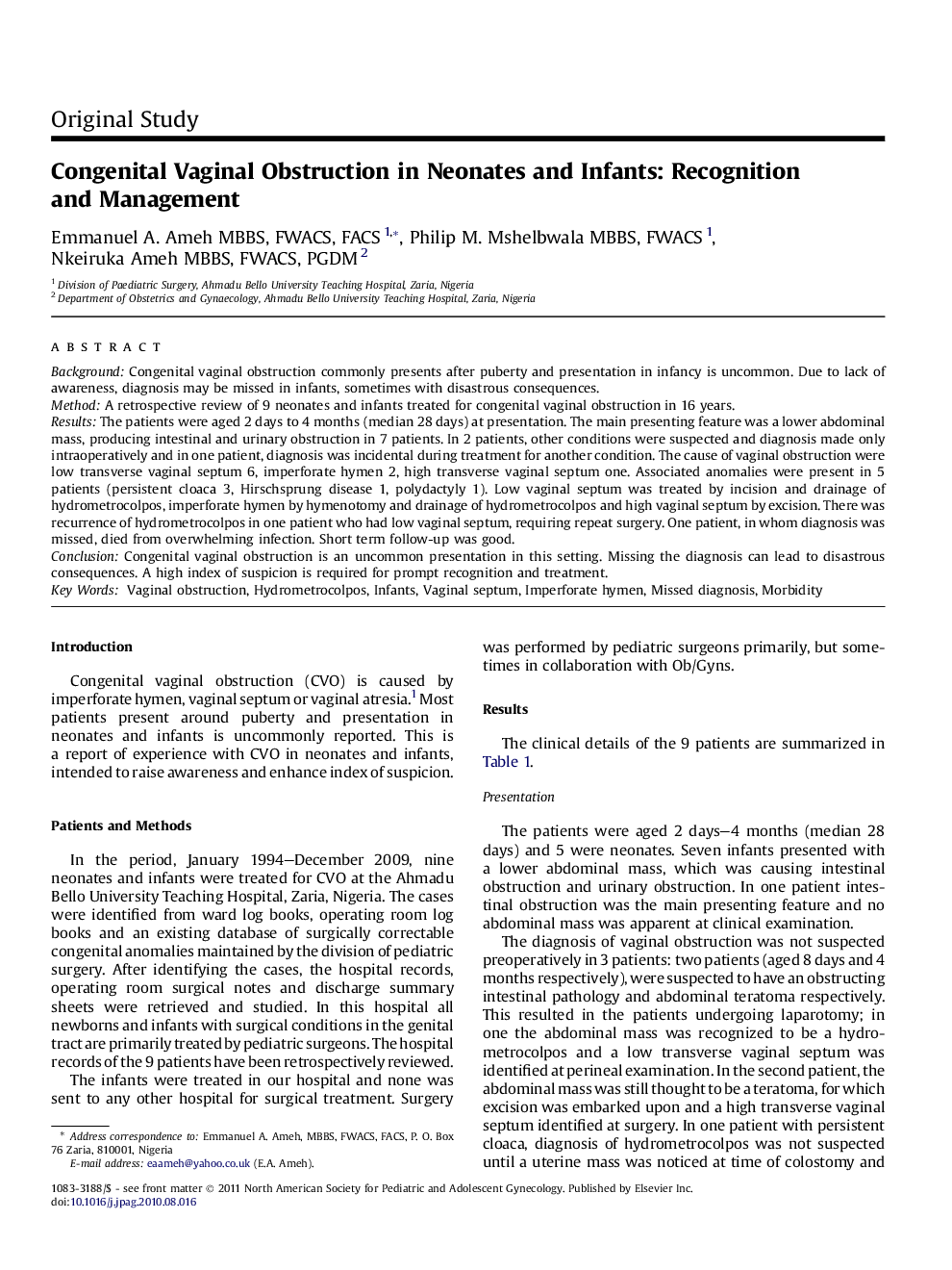| Article ID | Journal | Published Year | Pages | File Type |
|---|---|---|---|---|
| 3965166 | Journal of Pediatric and Adolescent Gynecology | 2011 | 5 Pages |
BackgroundCongenital vaginal obstruction commonly presents after puberty and presentation in infancy is uncommon. Due to lack of awareness, diagnosis may be missed in infants, sometimes with disastrous consequences.MethodA retrospective review of 9 neonates and infants treated for congenital vaginal obstruction in 16 years.ResultsThe patients were aged 2 days to 4 months (median 28 days) at presentation. The main presenting feature was a lower abdominal mass, producing intestinal and urinary obstruction in 7 patients. In 2 patients, other conditions were suspected and diagnosis made only intraoperatively and in one patient, diagnosis was incidental during treatment for another condition. The cause of vaginal obstruction were low transverse vaginal septum 6, imperforate hymen 2, high transverse vaginal septum one. Associated anomalies were present in 5 patients (persistent cloaca 3, Hirschsprung disease 1, polydactyly 1). Low vaginal septum was treated by incision and drainage of hydrometrocolpos, imperforate hymen by hymenotomy and drainage of hydrometrocolpos and high vaginal septum by excision. There was recurrence of hydrometrocolpos in one patient who had low vaginal septum, requiring repeat surgery. One patient, in whom diagnosis was missed, died from overwhelming infection. Short term follow-up was good.ConclusionCongenital vaginal obstruction is an uncommon presentation in this setting. Missing the diagnosis can lead to disastrous consequences. A high index of suspicion is required for prompt recognition and treatment.
